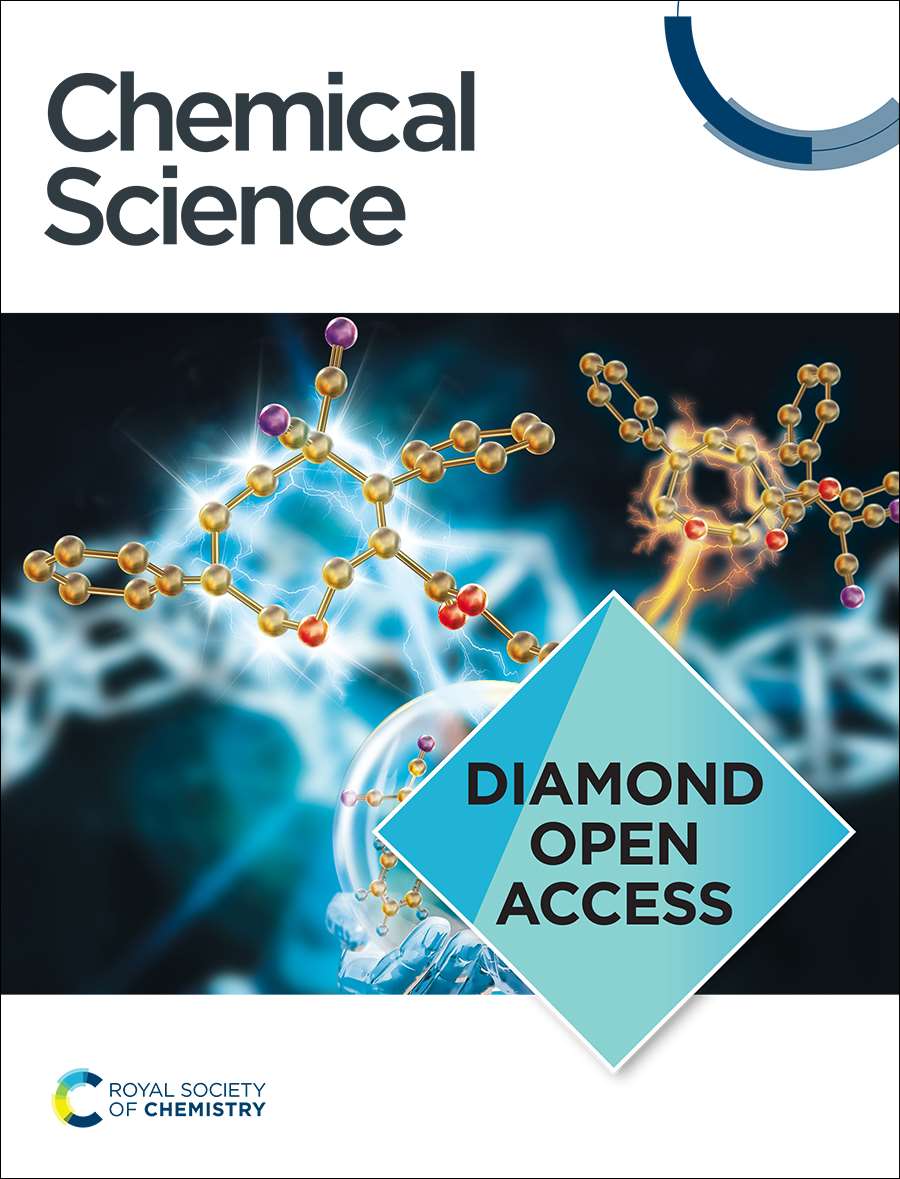Rapid, Potent, and Persistent Covalent Chemical Probes to Deconvolute PI3Kα Signaling
IF 7.6
1区 化学
Q1 CHEMISTRY, MULTIDISCIPLINARY
引用次数: 0
Abstract
Chemical probes have gained importance in the elucidation of signal transduction in biology. Insufficient selectivity and potency, lack of cellular activity and inappropriate use of chemical probes has major consequences on interpretation of biological results. The catalytic subunit of phosphoinositide 3-kinase α (PI3Kα) is one of the most frequently mutated genes in cancer, but fast-acting, high-quality probes to define PI3Kα's specific function to clearly separate it from other class I PI3K isoforms, are not available. Here, we present a series of novel covalent PI3Kα-targeting probes with optimized intracellular target access and kinetic parameters. On-target TR-FRET and off-target assays provided relevant kinetic parameters (kchem,kinact and Ki) to validate our chemical probes. Additional intracellular nanoBRET tracer displacement measurements showed rapid diffusion across the cell membrane and extremely fast target engagement, while investigations of signaling downstream of PI3Kα via protein kinase B (PKB/Akt) and forkhead box O (FOXO) revealed blunted pathway activity in cancer cell lines with constitutively activated PI3Kα lasting for several days. In contrast, persistent PI3Kα inhibition was rapidly bypassed by other class I PI3K isoforms in cells lacking functional Phosphatase and Tensin homolog (PTEN). Comparing the rapidly-diffusing, fast target-engaging chemical probe 9 to clinical reversible PI3Kα-selective inhibitors alpelisib, inavolisib and 9r, a reversible analogue of 9, revealed 9’s superior potency to inhibit growth (up to 600-fold) associated with sustained suppression of PI3Kα signaling in breast cancer cell lines. Finally, using a simple washout protocol, the utility of the highly-selective covalent PI3Kα probe 9 was demonstrated by the quantification of the coupling of insulin, EGF and CXCL12 receptors to distinct PI3K isoforms for signal transduction in response to ligand-dependent activation. Collectively, these findings along with the novel covalent chemical probes against PI3Kα provide insights into isoform-specific functions in cancer cells and highlight opportunities to achieve improved selectivity and long-lasting efficacy.快速、强效、持久的共价化学探针,解除 PI3Kα 信号传导的困扰
化学探针在阐明生物学中的信号转导方面发挥着越来越重要的作用。化学探针的选择性和有效性不足、缺乏细胞活性以及使用不当都会对生物学结果的解释产生重大影响。磷酸肌酸 3- 激酶催化亚基 α(PI3Kα)是癌症中最常发生突变的基因之一,但目前还没有快速、高质量的探针来确定 PI3Kα 的特定功能,从而将其与其他 I 类 PI3K 同工酶明确区分开来。在这里,我们介绍了一系列新型共价 PI3Kα 靶向探针,它们具有优化的细胞内靶向通路和动力学参数。靶上 TR-FRET 和脱靶测定提供了相关的动力学参数(kchem、kinact 和 Ki),以验证我们的化学探针。其他的细胞内纳米荧光转移示踪剂位移测量结果显示,PI3Kα在细胞膜上的扩散速度极快,与靶点的接触速度也极快,而通过蛋白激酶B(PKB/Akt)和叉头盒O(FOXO)对PI3Kα下游信号传导的研究显示,在组成型激活的PI3Kα可持续数天的癌细胞系中,通路活性减弱。与此相反,在缺乏功能性磷酸酶和Tensin同源物(PTEN)的细胞中,其他I类PI3K同工酶会迅速绕过持续的PI3Kα抑制。将快速扩散、快速靶向的化学探针9与临床可逆PI3Kα选择性抑制剂alpelisib、inavolisib和9的可逆类似物9r进行比较,发现9在抑制乳腺癌细胞系生长(高达600倍)和持续抑制PI3Kα信号传导方面具有更强的效力。最后,利用一个简单的冲洗方案,通过量化胰岛素、EGF 和 CXCL12 受体与不同 PI3K 同工酶的耦合,证明了高选择性共价 PI3Kα 探针 9 在配体依赖性激活时的信号转导作用。总之,这些发现与针对 PI3Kα 的新型共价化学探针一起,让人们深入了解了癌细胞中异构体的特异性功能,并凸显了提高选择性和持久疗效的机会。
本文章由计算机程序翻译,如有差异,请以英文原文为准。
求助全文
约1分钟内获得全文
求助全文
来源期刊

Chemical Science
CHEMISTRY, MULTIDISCIPLINARY-
CiteScore
14.40
自引率
4.80%
发文量
1352
审稿时长
2.1 months
期刊介绍:
Chemical Science is a journal that encompasses various disciplines within the chemical sciences. Its scope includes publishing ground-breaking research with significant implications for its respective field, as well as appealing to a wider audience in related areas. To be considered for publication, articles must showcase innovative and original advances in their field of study and be presented in a manner that is understandable to scientists from diverse backgrounds. However, the journal generally does not publish highly specialized research.
 求助内容:
求助内容: 应助结果提醒方式:
应助结果提醒方式:


